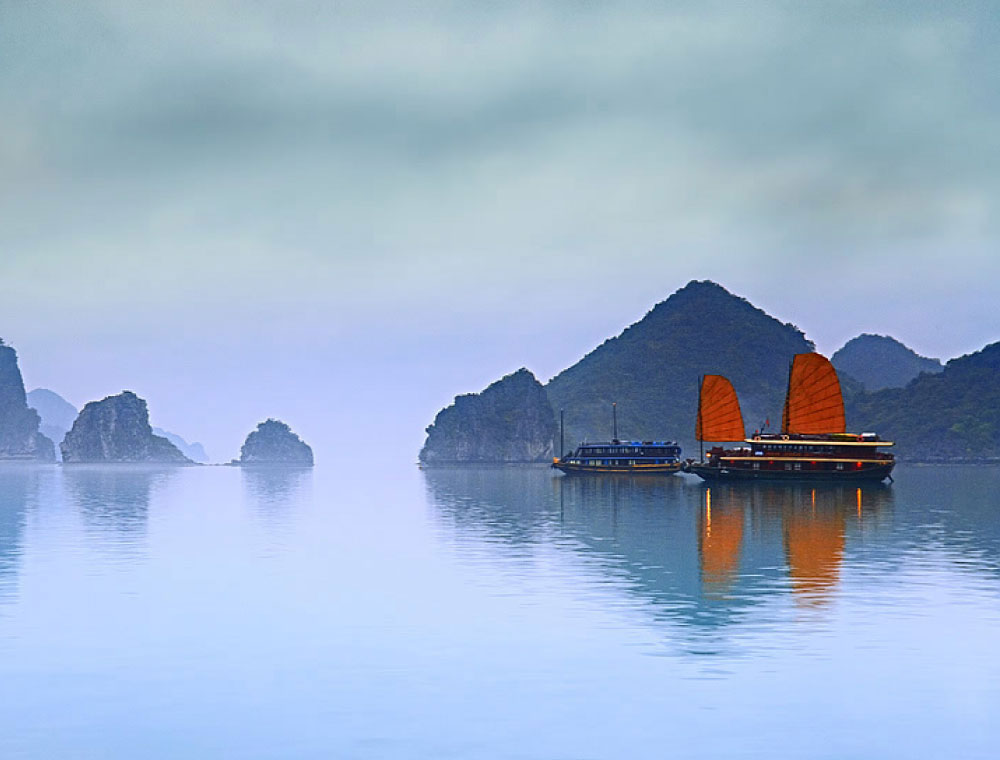
MOSAIC TOURS
Add: 7 Ngo Gach str., Hoan Kiem dist., Hanoi, Vietnam
Hotline: 0974.438.299/ 0965.431.556
Copyright © 2014. All rights reserved.


Known to most as Saigon, Ho Chi Minh City is a city of contrasts. The pace of life is frenetic, and yet the wide boulevards and parks help the city retain an air of calm. Classic French architecture competes for attention with brand new high-rise buildings. The port hosts vast tankers and cruise-liners while tiny sampans dart around them on the Saigon River.
The eclectic mix of old and new in Saigon is the legacy of the many occupiers of the city since the Khmers used the area for hunting five hundred years ago. When the French took control in the late 19th century, they razed the city and rebuilt it in the image of a European capital. The resulting wide boulevards, elegant French architecture, and leafy ambience remain today, but with a very Asian feel. Sidewalks designed for evening strolls are now lined with food stalls and cafes that spill into the street. The villas left by the French have been converted into the city's best restaurants, and the wide tree-lined streets are abuzz with motorbikes.
Ho Chi Minh City is actually three cities in one, and the official city limits encompass a vast area stretching nearly from the East Sea to the Cambodian border. However, all the major attractions are in the centre of the city and can be reached easily on foot. A foray to Chinatown requires wheeled transportation, and there is none better than the city's ubiquitous mode of transportation, the cyclo. All the sights and sounds of the city can be experienced first-hand and at a leisurely pace, making traveling by cyclo a unique pleasure.
JADE PAGODA
Built in 1892 the Jade Pagoda is dedicated to a pantheon of Taoist and Buddhist divinities. This pagoda was an important meeting place for Chinese secret societies that planned to overthrow the government in Peking during the Manchu Dynasty. It is one of the most colorful pagodas in HCMC, filled with incense, candles and statues of various divinities and heroes. A robed Taoist Jade Emperor surveys the main sanctuary, under a roof covered in elaborately patterned tiles.
GIAC LAM PAGODA
Built in 1744, this is the oldest pagoda in Ho Chi Minh City. Situated in Tan Binh District the pagoda evokes a feeling of another world, with its pungent incense, funeral tablets and carved inscriptions. Carved wooden pillars bear gilded descriptions of the lives of the monks whose portraits adorn the walls. This pagoda also houses many beautifully carved wooden statues of the Buddha, reincarnations of Buddha, judges, guardians from Hell and the Buddha of Mercy.
THIEN HAU TEMPLE
Cantonese fishermen built this Chinese temple, dedicated to the Goddess of the Sea, at the end of the 18th century. The altar for the Goddess features three statues of the goddess Thien Hau. Votive paper offerings are burned in a large furnace at the entrance.
NOTRE DAME CATHEDRAL
Built between 1877 and 1883, Notre Dame Cathedral, with her two 40 meter towers topped with iron spires is one of Ho Chi Minh City's major landmarks. It is built in a neo-Romanesque form. The cathedral's red bricks and colored glass windows were imported from France. The cathedral was consecrated in 1962. Full services in both Vietnamese and English are held every Sunday morning.
SAIGON POST OFFICE
Located next to Notre Dame is Saigon's French-styled post office. Built between 1886 and 1891, the ochre-colored building has a glass canopy, ceiling fans, and enormous wall maps of "Saigon et Ses Environs". At the far end of the arched building is a large portrait of Ho Chi Minh.
BEN THANH MARKET
Ben Thanh is the largest market in Ho Chi Minh City. Shopkeepers sell a wide variety of local and imported products ranging from garments and textiles to handicrafts, flowers, and vegetables. The market was finished in 1914. The French-style building has a distinctive clock tower at its entrance.
WAR REMNANTS MUSEUM
This is a poignant display of the futility of war. Some of the black and white photography in the ‘Requiem’ exhibit is particularly touching; dedicated to both foreign and Vietnamese journalists and photographers who perished during the conflict. The courtyard outside contains the spoils of war, namely rusting jets, tanks and cannons.
REUNIFICATION PALACE
(Formerly the Presidential Palace)
Originally built for the French Governor-General of Indochina in 1868 the Norodom Palace as it was then known was abandoned in 1880 when government services moved to Hanoi. When the Government of South Vietnam was established in 1954, the palace became the luxurious residence of President Diem. In 1963, the palace was abandoned after a renegade pilot in the South Vietnamese army bombed and strafed the building. The current structure was opened in 1966. One of the most striking images of the War was the sight of North Vietnamese tank 843 crashing through the palace gates marking a symbolic end to the conflict in Indochina. On a tour of the palace one can visit underground tunnels and bunkers filled with radio equipment and maps left virtually untouched since 1975.
CHINATOWN – CHO LON
The largest Chinatown in Vietnam is Cholon, in district 5 and 6 of Ho Chi Minh City. Cholon’s current status was the result of political developments in the 18th and 19th centuries. The central market in Cholon is the Binh Tay market offering a wide range of products from food to clothing to daily necessities. It is also a wholesaler market and a tourist attraction. Another indication of Chinese activities in Cholon is the number of shops specializing in Chinese cultural and ritual items like religious objects and lion dance equipments. Today as modern buildings emerged in Cholon, the historical clan associations, temples and monasteries served as markers of history, reflect the relationship between the Chinese population and the state and continue in their roles as centers of Chinese cultural activities.
RUE CATINAT (DONG KHOI STREET)
Running from Notre Dame Cathedral down to the riverside, Dong Khoi St. is perhaps the most famous street in Saigon. Dong Khoi is lined with restaurants, cafes, art galleries and handicraft shops, and a stroll from one end of the street to the other is one of the joys of a visit to Saigon. On any City Tour guests may choose from the above, depending on their particular interests. For each option allow 1-2 hours. Entrance fees may vary from location to location. Note that museums, other than the War Remnants Museum, are closed on Mondays.
THE CAO DAI TEMPLES OF TAY NINH
The Cao Dai Sect was founded in the 1920's by Ngo Van Chieu, a Saigon civil servant and its followers believe in a combination of the Islamic, Christian, Buddhist, Taoist and Confucian faiths. The symbol of the religion is an "all-seeing eye", which dominates the altar at the Cao Dai Holy See, a colorful temple described by Graham Greene in The Quiet American as "The Walt Disney Fantasia of the East". Monks dressed in bright colors represent different branches of the sect and the noon mass (one of four each day) is an amazing spectacle.
THE TUNNELS OF CU CHI
Located a one-hour drive northwest of Ho Chi Minh City are the extraordinary Cu Chi tunnels. During the war Vietnamese guerillas built this labyrinth of narrow tunnels using them to hide during bombing raids and stage surprise attacks. The entire area of Cu Chi was designated a free fire zone and was heavily bombarded: you can still see numerous craters caused by 500 pound B52 bombs. There are over 200 kilometers of tunnels in the area, all of which were dug using only hand tools. Two sections of tunnel are open to the public and ex-Vietnamese fighters lead tours through the underground hospitals, kitchens and sleeping quarters. Visitors to Cu Chi can also fire AK47s and M16 rifles on a specially designed firing range.
MOSAIC TOURS
Add: 7 Ngo Gach str., Hoan Kiem dist., Hanoi, Vietnam
Hotline: 0974.438.299/ 0965.431.556
Copyright © 2014. All rights reserved.
